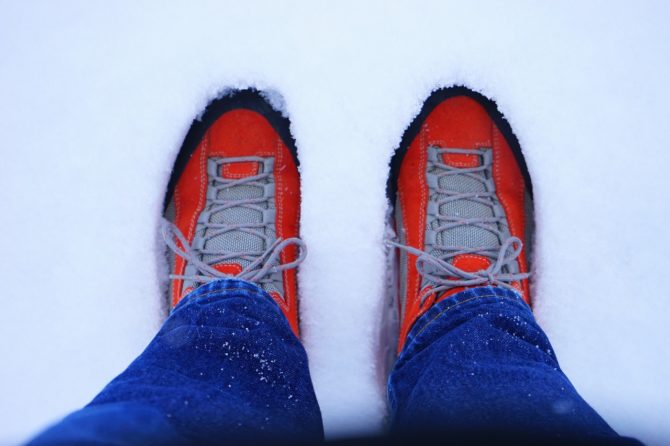
Best Footwear for Winter
Before you buy your next pair of winter boots, use this handy, podiatrist-approved guide to winter footwear. The Foot & Ankle Wellness Center wants you to stay safe this winter, which is why you should look for these important features in your winter shoes.
Material
Winter is wet and having wet feet in cold weather is a serious risk, so we want to keep our tootsies dry. For practical boots (like snow boots or hiking boots), look for naturally waterproof materials such as neoprene or rubber. In fashion boots (such as you might wear to an office holiday party), go for a treated leather to get a nice slick surface with a high quality and trendy shine.
Construction
Some boots will have waterproof layers sewn into the boot liners. These keep moisture from penetrating all the way down to your socks but still allow for a bit of breathability. Look also at the tongue of the boot, does it connect to the sides to keep water out or is it disconnected? A cuff at the top of the boot will absorb water before it enters your boot and can be very handy for activities like playing in the snow.
Tread
There’s nothing worse than going over the river and through the woods only to slip on Grandma’s front walk and end up in the emergency room. The tread of your boot is the very bottom and determines how much grip the boot will have on slippery surfaces. Picking the tread may be the most important feature to get right. For outdoor activities, boots should have high treads, meaning lots of space and deep channels for good grip. Wear shoes with good tread inside too, to deal with tracked-in snow that’s melted. Some boots offer removable outsoles with different levels of tread so your single pair of winter boots will be just as useful hiking in a winter wonderland as they are while relaxing at home.
Insulation
I don’t think it needs saying that winter is cold, but I’m going to say it anyway. Winter is cold! So, of course, we want our winter boots to keep our feet warm. Socks can help, but the boot itself should have insulating materials such as wool or fleece linings. Synthetic insulators are good as well but don’t get distracted by the fancy names they make up for it. Look at the actual tag and look for what the materials really are. You may even see a temperature rating on the tag, obviously the lower the temperature it protects you in, the more insulation it has.
Sizing
Once you’ve chosen all your other features, you need to make sure you get that amazing pair of boots in the correct size. Winter socks tend to be thick, so try them on with your boots to get a real idea of how much room you need inside. Walk around the store, and make sure your foot isn’t sliding around inside the boot which can cause blisters. Try the wall kick test—lightly kick the wall with the boot tip and if your toes hit the front of the boot, you should consider going up a size.
Special PSA—Socks
Plain cotton socks just don’t cut it in the wintertime, not even inside. You need to have thermal socks made of breathable materials that wick moisture and perspiration away from the foot. A sweaty foot inside a boot can make you colder, so look for wool or similar synthetic materials. Socks are a very important aspect of your footwear you should be getting right.
New shoes can make everything better, but not if they lead to pain, slipping, or cold and wet feet. Make sure you check each of these important features before heading to the checkout. If you do suffer a slip and fall this winter due to the wrong footwear, visit your trusted Central Ohio foot and ankle specialists at the FAAWC in Delaware, Ohio. We offer scheduled, walk-in, and urgent access appointments for your sudden foot or ankle injury. Call us today 740.363.4373
Leave a reply